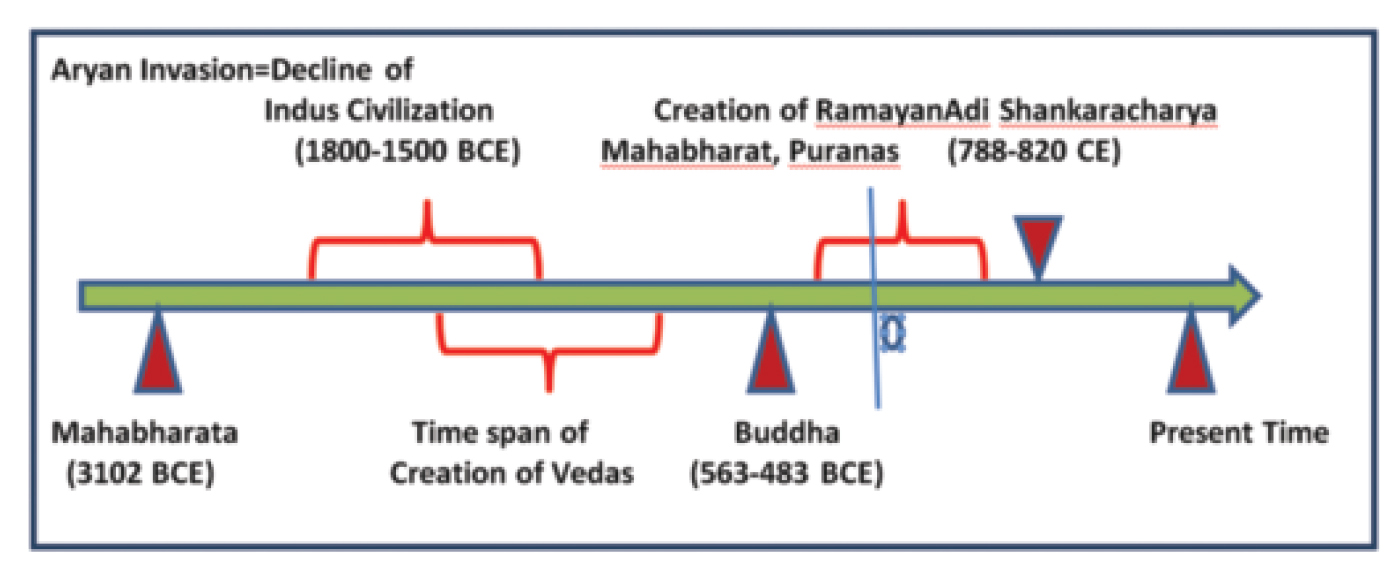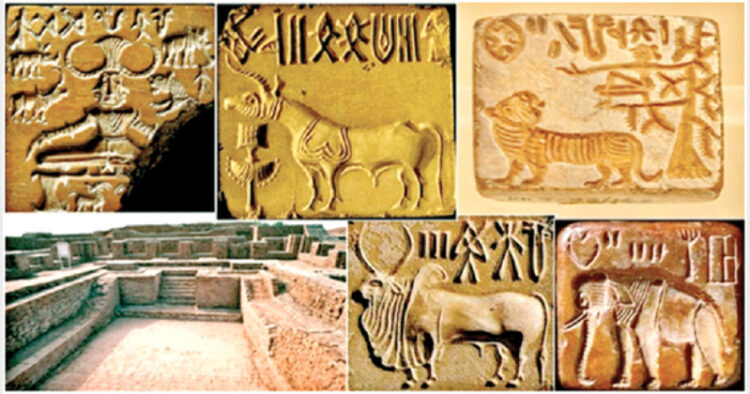What exactly is the nature of this ‘Aryan migration or invasion’ theory (AIT / AMT) proposed by the West, needs to be understood with some more depth. As mentioned in the previous article, the Aryans came to India from the grasslands of Central Asia as well as from Iran. In addition to this main argument, the researchers have come forward with more study and tried to consolidate their stand. In this article, we will try to understand the nature of these propositions very broadly and briefly.
Literary and Linguistic findings
Based on the descriptions of the deities from the Rig Veda, these ‘so-called’ researchers provided details about how these visiting Aryans looked, how they used to speak and how were they by nature. According to them, the Aryans looked fair, tall, and hefty, with dark eyes and sharp noses. They had mastered warfare and were aggressive in nature. They usually rode around on horseback. When they went to invade the Saptasindhu region of Mohenjodaro, Harappa, etc., they did use horses only. No horses were supposed to exist in that region before them! The Aryans were the first to take them there. The Aryans worshipped fire and various natural objects as deities. Their language was similar to that of Sanskrit. It was similar to the language of ancient Indian literature like the Vedas, but not akin to the present Sanskrit language. Moreover that Sanskrit claimed to be similar to European and Central Asian languages like Persian, English, Latin, Gothic, Greek, etc. Obviously, because these Aryans were said to have come from there only! The research also concluded at a point that the Aryan invasion or migration might have taken place sometime between 1800 and 1500 BC.
Archaeological and Excavation Findings
Western scholars continued to draw some bizarre conclusions about the Aryans. For example, excavations along the Indus River at the beginning of the twentieth century revealed the same cities that were destroyed by Indra, the king of the gods, also known as Purandar (the destroyer of towns), as described earlier. The corpses of some people were also found buried there and they must have belonged to the locals who were killed by the Aryans! Many mudra or seals were recovered from there. But, surprisingly there is no trace of Vedic deities or their sacrifices and rituals inscribed on them. Funnily enough, it features images of some wild animals, but except that of horses, whereas, on the contrary, the Vedas are full of illustrious descriptions of horses. The same applied for chariots. Chariots are not to be found on Indus-mudras. However, in Vedic literature, chariots can be seen in some places! It is evident that there is something mysteriously written on the coins, but it is not as elaborative inscription as Vedmantra (Vedic chants).In short, all this was an effort to prove that all the mudras, corpses and other objects must have been in existence before the Aryan invasion.After the Aryans invaded and conquered the Indus River region, the next period seems to have a peaceful settlement. Therefore, the Vedas supposed to have been created during this period of pacifism. That is why the archaeologists have concluded that horses can be seen in the Vedas, but no traces of horses can be found in these cities on the banks of the Indus River.

Chronology of Ancient India According to the Western Research
As mentioned above, if the span of Aryan invasion falls somewhere between 1800 and 1500 BC, then the period of the Vedas naturally follows it. Based on this hypothesis and some other researches in Indian history, various Western researchers and scholars have determined the time of various events and individuals in Ancient India. Going into those details would be irrelevant here right now. But, to sum it up, all those events and individuals, according to Western research, would appear on the timeline in the following manner.
The findings from the above research actually fall short of many other scientific tests. Many counter-questions, therefore, have been raised by many scholars against the validity of such study. Some of them remain unanswered, while the answers of some are controversial. Today, many Indian scholars and genius minds have come forward to pace new research in this field. They have painstakingly researched each and every aspect of this subject in a very methodical manner. Their study is based on available disciplines such as Linguistics, Archeology, Genetics, DNA Propagation Research, Anthropology, Oceanography, Hydrology, Geology, Astronomy, etc. They are successful in rationally portraying the so-called migration and chronology of the Aryans. As a result, most of the issues mischievously raised in the above discussion have been resolved. We will see how this has been done in subsequent articles.
(To be continued…)
(The writer is a scholar of the ancient history, culture, art, literature, philosophy of India – i.e. Bharat Vidya or
Indology from Pune, Maharashtra)
(Translated by Dr Pranavkumar Ratnaparkhi, an assistant professor of English at HPT Arts & RYK Science College, Nasik, Maharashtra)

















Comments